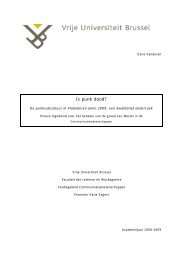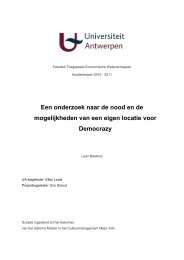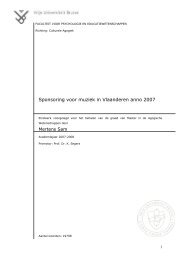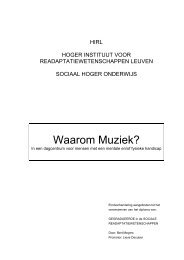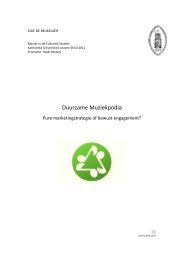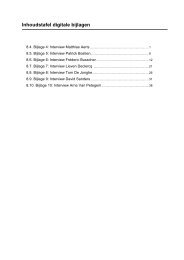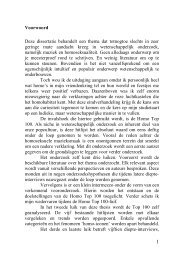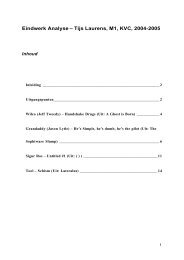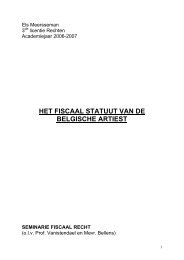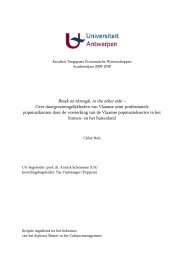Hip hop identity in a township reality. - Poppunt
Hip hop identity in a township reality. - Poppunt
Hip hop identity in a township reality. - Poppunt
You also want an ePaper? Increase the reach of your titles
YUMPU automatically turns print PDFs into web optimized ePapers that Google loves.
for example the features of BSAE are based on the English speech of native Zulu<br />
speakers, while our black <strong>in</strong>terviewees are all native Xhosa speakers. Next to that,<br />
some authors dist<strong>in</strong>guish a selected amount of broad features, while other authors<br />
will rather subdivide them <strong>in</strong> a more restricted series of concrete features.<br />
We took examples from almost all of our <strong>in</strong>terviews with our native Xhosa-speak<strong>in</strong>g<br />
<strong>in</strong>terviewees, to show that BSAE was frequently used by these <strong>in</strong>terviewees and to<br />
show <strong>in</strong> this way that it is widely spread amongst this population group. Although<br />
they use BSAE, it is remarkable that some features occur more frequently than<br />
others, of course this is also due to the fact that there is not a f<strong>in</strong>al def<strong>in</strong>ition of<br />
BSAE yet. Certa<strong>in</strong> features are more entrenched or fossiled than others (de Klerk<br />
and Gough: 364).<br />
In most cases the authors try to f<strong>in</strong>d an explanation for these features, which can<br />
be found most of the time <strong>in</strong> the mother tongue of the BSAE speaker, but we will<br />
not elaborate on that here, because it is beyond our <strong>in</strong>terest. We can say that these<br />
features are thought to relate to both native language transfer as well as universal<br />
features relat<strong>in</strong>g to pr<strong>in</strong>ciples of language learn<strong>in</strong>g and usage (de Klerk and Gough:<br />
363). BSAE also shares grammatical features with a range of new Englishes<br />
generally and new Englishes <strong>in</strong> Africa <strong>in</strong> particular. Most of the fifteen features that<br />
Schmied considers as be<strong>in</strong>g characteristic of English <strong>in</strong> Africa (Schmied: 65), also<br />
occur as features of BSAE.<br />
Wade (Wade: 3-5) dist<strong>in</strong>guishes five general features, of which we will only use four.<br />
Between brackets we give the expected Standard English form.<br />
1) Non-standard use of the progressive, which <strong>in</strong> fact means that “(…) the<br />
dist<strong>in</strong>ction between dynamic verbs (describ<strong>in</strong>g actions and processes) and<br />
stative verbs (describ<strong>in</strong>g states of affairs) is blurred <strong>in</strong> BSAE. Syntactically,<br />
stative verbs <strong>in</strong> Standard English stative do not usually occur <strong>in</strong> the progressive<br />
but <strong>in</strong> BSAE verbs such as ‘have’, ‘like’, and ‘know’ frequently do occur with –<strong>in</strong>g<br />
forms:” (Wade: 3)<br />
I don’t th<strong>in</strong>k I’m hav<strong>in</strong>g (I have) a negative impact towards the community.<br />
(Full Stop)<br />
The progressive <strong>in</strong> BSAE “(…) may be used <strong>in</strong> place of the simple present or ‘will’<br />
future:” (Wade: 3)<br />
He’s still an underground producer, but he is mak<strong>in</strong>g (he makes) nice beats.<br />
(Mayja)



